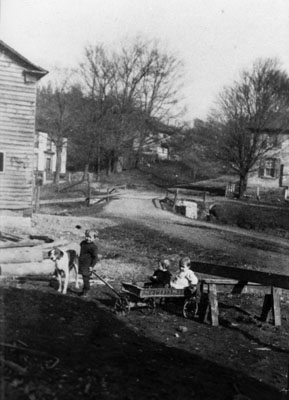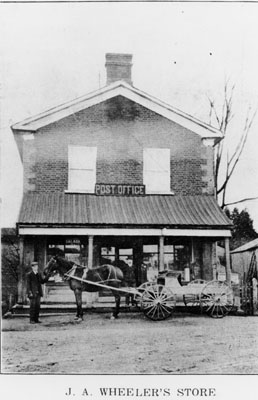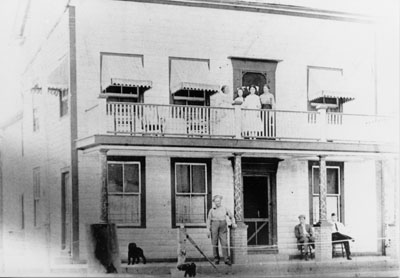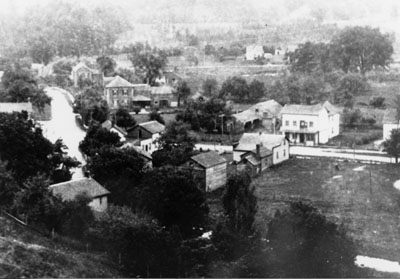Historic Hamlet
Glen Williams is a historic hamlet located along the base the Niagara Escarpment. Founded in 1825, many of the buildings here are original, often dating to the 1840s and 1850s; several are included in The Canadian Register of Historic Places (CRHP).
The dominant feature of Glen Williams is the Credit River as it snakes it way through the village. This is only fitting since the industries that once dominated this village were founded on the power of the waters of the Credit.
Benajah Williams
In 1825, Benajah Williams and his wife, Elizabeth Kennedy, brought their large family to Esquesing Township. As in most emerging settlements, the power of the local stream, in this case the Credit River, was used to run saw and flour mills. But for the local farmers, the Williams were more than just millers. They were blacksmiths (Joel Williams), cabinetmakers (Isaac Williams), leather tanners (David Williams), and general store (Charles Williams). Since Benajah had run a textile mill in the Niagara peninsula before moving to the Credit, it was natural for his son Jacob to open a woollen mill here in 1839.

c. 1908 Wheeler children on Prince Street
The framed building on left was the schoolhouse until 1873.

c.1913 Wheeler's Store on Main Street
Carriage and team of horses posed in front of Wheeler’s store
Wheeler’s General Store
The settlement which grew up around all this activity was known locally as Williamsburgh until 1852. Postal authorities refused to give the community a post office unless its name was unique so it became Glen Williams (as there was already a Williamsburgh settlement on the St. Lawrence River). Although Charles Williams would be the first postmaster, Wheeler’s General Store (The Copper Kettle Pub today) was where generations of residents in the Glen went for their mail.
1850’s Glen Williams
William Alexander opened a hotel in the village in 1848 (now a private residence). Besides Charles Williams’ saw and flour mills, the woollen mills and the tannery, there were cabinet makers, pump makers, shingle makers, Joseph Tweedle’s and Archibald Cooper’s saw mills, and Leslie’s brickyards. The village even purchased its own fire engine in 1856 (only to see it destroyed in a fire ten years later!).

c. 1910 Main Street Hotel
Hotel of Thomas J. Hill, a popular drinking hole

c. 1908 View of village taken from hill behind Prince St.
Hotel at centre right. Beaumont home at centre left.
Beaumont Knitting Mill
The former Beaumont Knitting Mill still stands on the north edge of the village. Built by Samuel Beaumont in 1882 it replaced the converted saw mill he acquired from Joseph Tweedle several years before.
Photo Left c.1914: Main Street looking towards Wheeler’s store.
Glen Williams: An Oasis in the Credit Valley
A history of Glen Williams written by John Mark Rowe entitled Glen Williams: An Oasis in the Credit Valley is available at:
- Main St. Market
- Directly from the Esquesing Historical Society.
